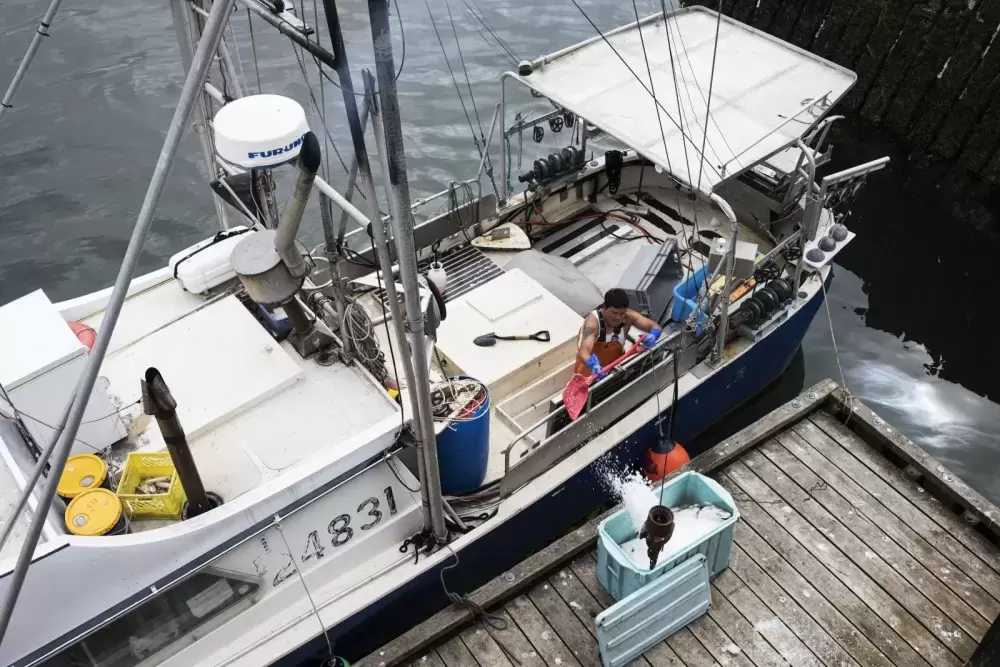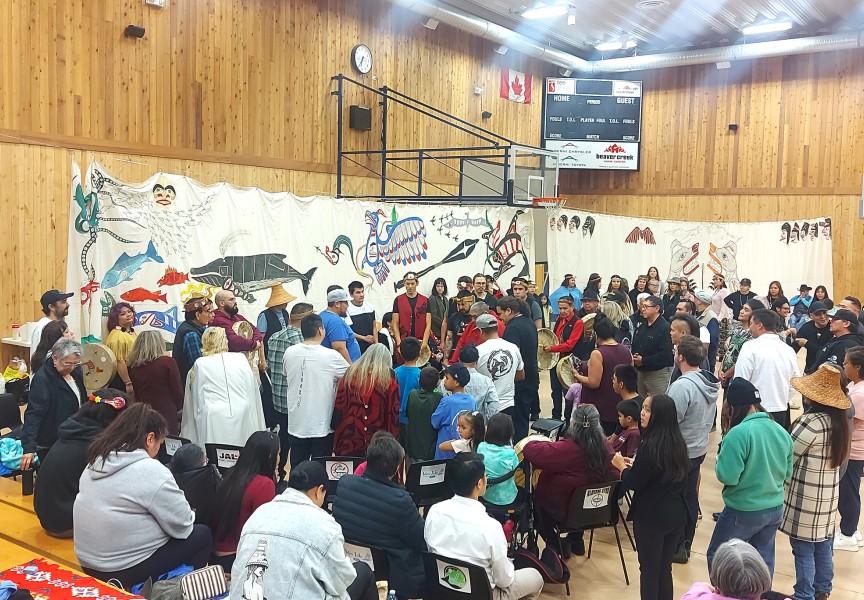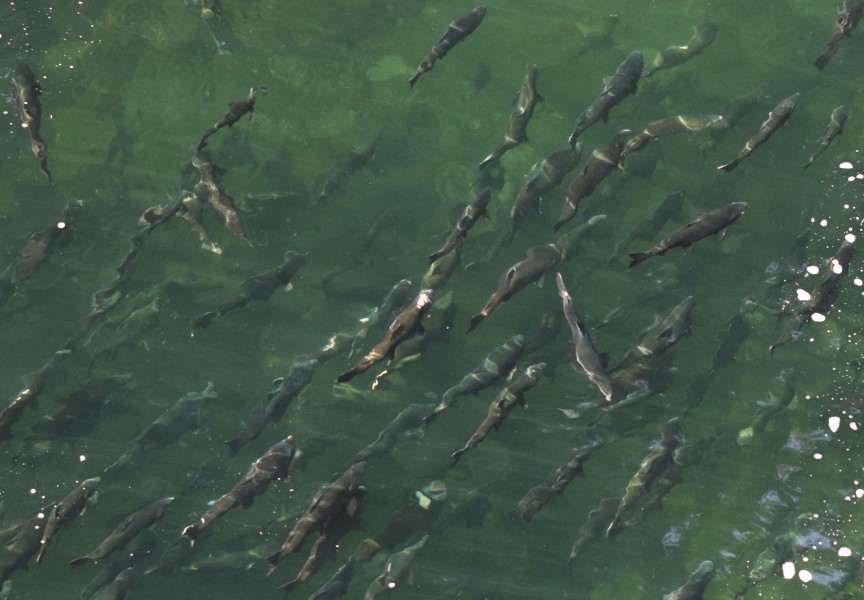Vic Amos, a west coast Vancouver Island commercial troller since the 1970s, hasn’t been fishing yet this season.
“No, we’re not fishing yet, but we’re hoping,” Amos said when Ha-Shilth-Sa called him for comment on a plan to close 60 per cent of commercial salmon fisheries and scale down B.C.’s commercial fishing fleet, already a shadow of its former self.
As one of only three remaining Nuu-chah-nulth commercial fishermen on the west coast of the Island, Amos is not so optimistic about long-term prospects for small-boat, family-run commercial fishing.
“We may be the last,” he said.
The Hesquiaht First Nation fisherman has seen buy-back programs come and go through the years with one consistent outcome: Steadily declining participation in the west coast commercial fishing sector and opportunity shifting to recreational fishing and fish farming.
“It always seems like there’s a bigger picture,” he said.
“The decisions to implement new long-term closures and permanently remove effort from the commercial salmon fishery were not easy as they impact people, communities and livelihoods,” Fisheries Minister Bernadette Jordan said on June 29. “But with fewer and fewer returning every year — disappearing before our eyes — we have to act now.”
As part of the Pacific Salmon Strategic Initiative (PSSI), a “commercial transition program” will be launched this fall allowing licence holders a chance to exit the industry with the promise of fair market value for licences.
The measures imply commercial fishing takes the lion’s share of salmon, but that’s simply not the case, Amos said.
“There are some runs in trouble, but I would say the government’s doing a very poor job of managing the fishery,” Amos said. “It isn’t overfishing. The small amount of people participating is not a problem.”
Harvesters, many of whom had geared and crewed in preparation for the 2021 season, were not consulted or notified in advance of the fishery closures, said UFAWU-Unifor. The union represents about 5,000 commercial fishers in B.C. About 60 per cent are Indigenous.
“These closures will devastate salmon, harvesters and coastal communities alike,” the union said in a news release. “The only gain will be the political favour of those who’ve been fooled into thinking this is the answer to the salmon crisis.”
It’s not the first time the commercial fishing industry has been at the forefront of sacrifices, said Dave Rolston, Tseshaht First Nation fisheries manager.
“We didn’t know how dramatic the reduction was going to be, but I think we all knew it was coming,” he said.
Those who fish the Fraser stocks will feel the brunt of the closures, but the impact will be widespread, he expects. Of 200 First Nations in coastal B.C., about half have a strong fisheries component in various forms. As well, the commercial fishing sector is a key economic driver at major landing areas.
“These are all going to impact any First Nation that has any stake in a commercial fishery,” Rolston said. “Overall it’s going to have a big impact and yet we really don’t know how big it’s going to be.”
The season was already shaping up to be another dismal one with a forecast Somass sockeye return of 350,000, one of few exceptions on the south coast. Based on test fishing, the forecast was adjusted upward to 500,000. Now, due to a relentless heat wave, that figure may have to be readjusted. Sockeye are holding off, waiting for cooler water before entering the river.
Eric Angel, Uu-a-thluk fisheries program manager, attributes the buy-back and closures to the same top-down, paternalistic management style that has long hindered Nuu-chah-nulth hopes of rebuilding west coast fisheries.
“It’s going to create tension,” he said, reciting Einstein’s Parable of Quantum Insanity: Insanity is doing the same thing over and over and expecting different results. There have been five West Coast commercial buy-back plans since the 1970s. The most recent, the Mifflin Plan, halved B.C.’s commercial fleet 20 years ago.
“If a buy-back program were the solution they could have solved this years ago,” Angel said.
What is missing among DFO initiatives announced so far is any further measures to restrict the recreational catch after chinook closures imposed two years ago.
“They’re not pulling the hatchery lever to help fish. It’s to help the sports fishery, so at the end of the day, commercial fishing is being used as a scapegoat in this and that includes First Nations,” Angel said. “There’s no accountability to those who suffer the most.”
Harvest limits can help but so can habitat recovery, he contends.
“DFO ceded the terrestrial side of the resource to the province years ago and the province has a free hand to do what it wants,” Angel said. “Old-growth forest is not separate from salmon but part of a very rich and complex ecosystem. We know that mowing down the forest is bad for salmon.”
Habitat recovery here and there only makes a dent in the problem, he added.
“Not to say you can’t do restoration work that’s beneficial, but the single best thing you can do for salmon habitat is not destroy any more of it,” he said.
Funding that could be channeled for habitat restoration will go to the buy-back program as an aging workforce of commercial fishers leave the industry, the union says.
Amos recalls what a Supreme Court judge heard in 2009 before affirming the rights of five Nuu-chah-nulth Five Nations to fish and sell species in their territorial waters. The judge was told there were 8,000 people who counted themselves as Nuu-chah-nulth.
And how many earn a living from fishing?
Three he was told.
“That gives you an idea of how disastrous all these buy backs have been,” Amos said.
Wickanninish, Cliff Atleo, lead negotiator for Ahousaht First Nation, called it a “wishy-washy announcement” with unclear implications. He awaits more details on the federal government’s position, possibly coming at a meeting with DFO negotiators in mid July.
What was clear was April’s B.C. Court of Appeal ruling, in effect telling DFO to remedy the problems created by consistently infringing on the right to harvest and sell fish.
“What we said after the court case was don’t take anything off the table,” Atleo said.
What they need to do instead is enhance initiatives on the table through measures that support reconciliation, he said.







